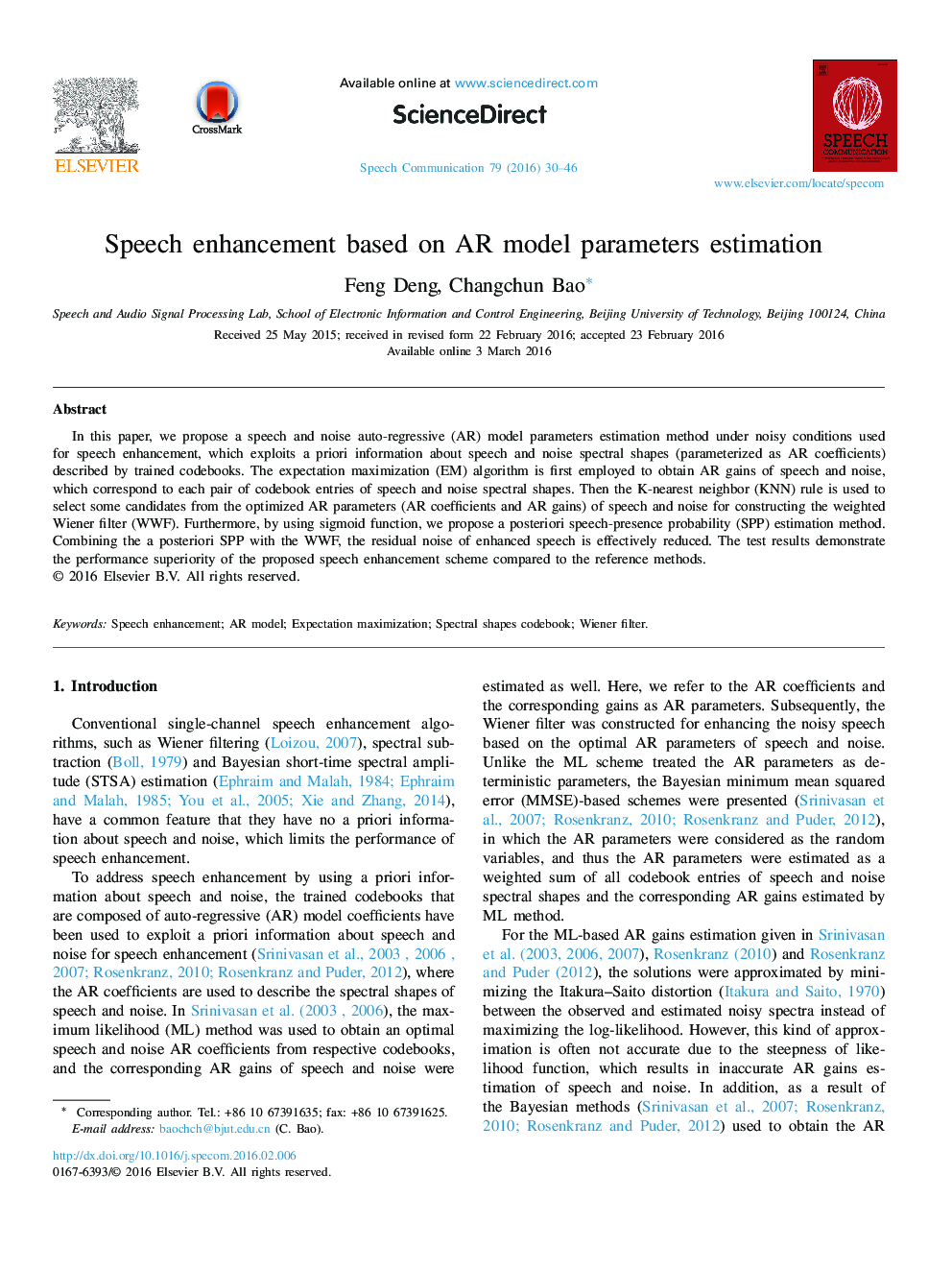| Article ID | Journal | Published Year | Pages | File Type |
|---|---|---|---|---|
| 566683 | Speech Communication | 2016 | 17 Pages |
•Speech and noise codebooks are trained as a priori information for speech enhancement.•EM algorithm is employed to estimate AR model gains of speech and noise.•The ambiguity problem can be reduced by using the KNN rule.•We propose a posteriori SPP estimation method by applying sigmoid function.•The residual noise between harmonics of voiced speech is removed.
In this paper, we propose a speech and noise auto-regressive (AR) model parameters estimation method under noisy conditions used for speech enhancement, which exploits a priori information about speech and noise spectral shapes (parameterized as AR coefficients) described by trained codebooks. The expectation maximization (EM) algorithm is first employed to obtain AR gains of speech and noise, which correspond to each pair of codebook entries of speech and noise spectral shapes. Then the K-nearest neighbor (KNN) rule is used to select some candidates from the optimized AR parameters (AR coefficients and AR gains) of speech and noise for constructing the weighted Wiener filter (WWF). Furthermore, by using sigmoid function, we propose a posteriori speech-presence probability (SPP) estimation method. Combining the a posteriori SPP with the WWF, the residual noise of enhanced speech is effectively reduced. The test results demonstrate the performance superiority of the proposed speech enhancement scheme compared to the reference methods.
